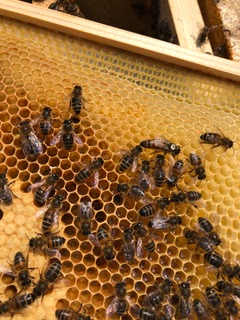Tuesday, 20 July 2021
We are quite literally buzzing here at the Office with our very own sponsored Beehive starting to take shape. Here’s why we think it’s important with a few words from Kin Apiary. We’ll be keeping you posted with Bee News regularly. There’s no sting in this tale, just a helping hand for nature.
“Our bees are in decline. Honeybees and bumblebees are our most loved bees but there are actually over 2000 different types of bees in the UK and they are all at risk.
Why?
We’ve lost 99% of our wildflower meadows since the end of WWII while the use of pesticides has grown and grown and we are now seeing the real impact of these changes.
Why does it matter you may ask. Because almost everything we eat requires pollination either directly or indirectly: that’s why supporting our bees is so important.
Kin Apiary sits just outside Dunfermline on the edge of pasture land and fairly close to The Glen. They’re the closest beehives to the Stevenson and Marshall offices and the bees forage the wildflowers and hedgerows from Spring until late in the year. The beehives are lucky enough to have some really cool farmers nearby who agree that pesticides are not good and are planting wildflower meadows to support pollinators and replacing lost hedgerows with native flowering plants such as hawthorn and buckthorn which in turn will support the bees.
It’s fantastic news that Stevenson and Marshall are also aware of the issues facing our bees and have taken the proactive step to sponsor one of the Kin Beehives. This will allow a beekeeper to support a colony of bees throughout the year and provide a warm and safe place for them to live and any treatments they may need to keep them healthy and to thrive.
We’re now in the middle of summer and the SM Queen Bee (Queen Bee-oncey) is building up a new colony and taking advantage of the fantastic weather we’ve been having to store some nectar and make honey to see her family through the winter months. At the moment she’s in a small nucleus hive and laying around 1000 eggs a day. Each one of these eggs will hatch and become a daughter bee with a rota of roles as she moves through her life cycle. As the colony grows in size we’ll be moving the bees into a larger full-size beehive painted in the Stevenson and Marshall colours and following their progress throughout the year.
Note: The Queen bee is larger and longer than her daughters. Beekeepers mark them so they’re easier to spot as the colony cannot survive without a Queen so we need to be sure she’s there! Can you spot her?”
